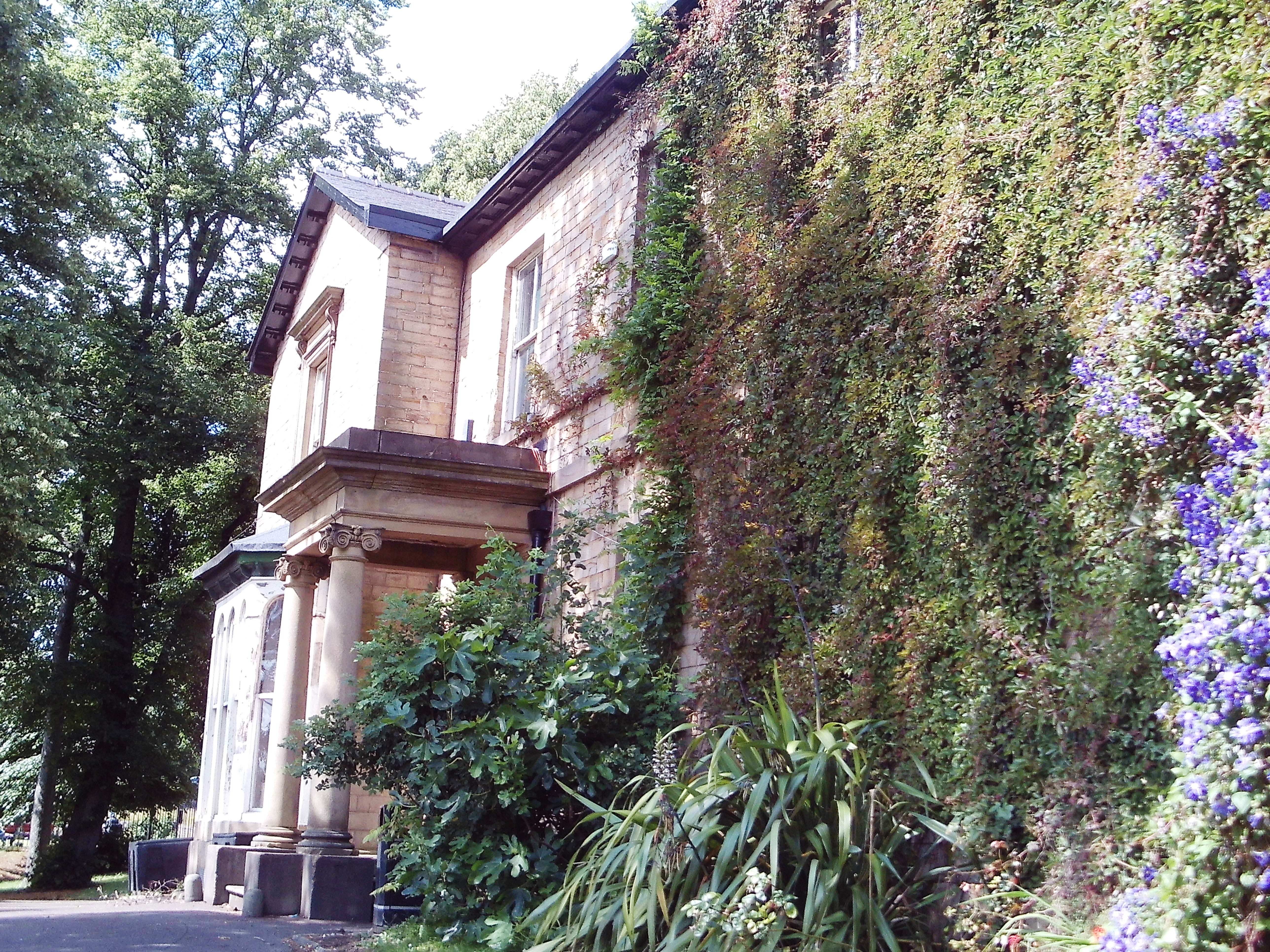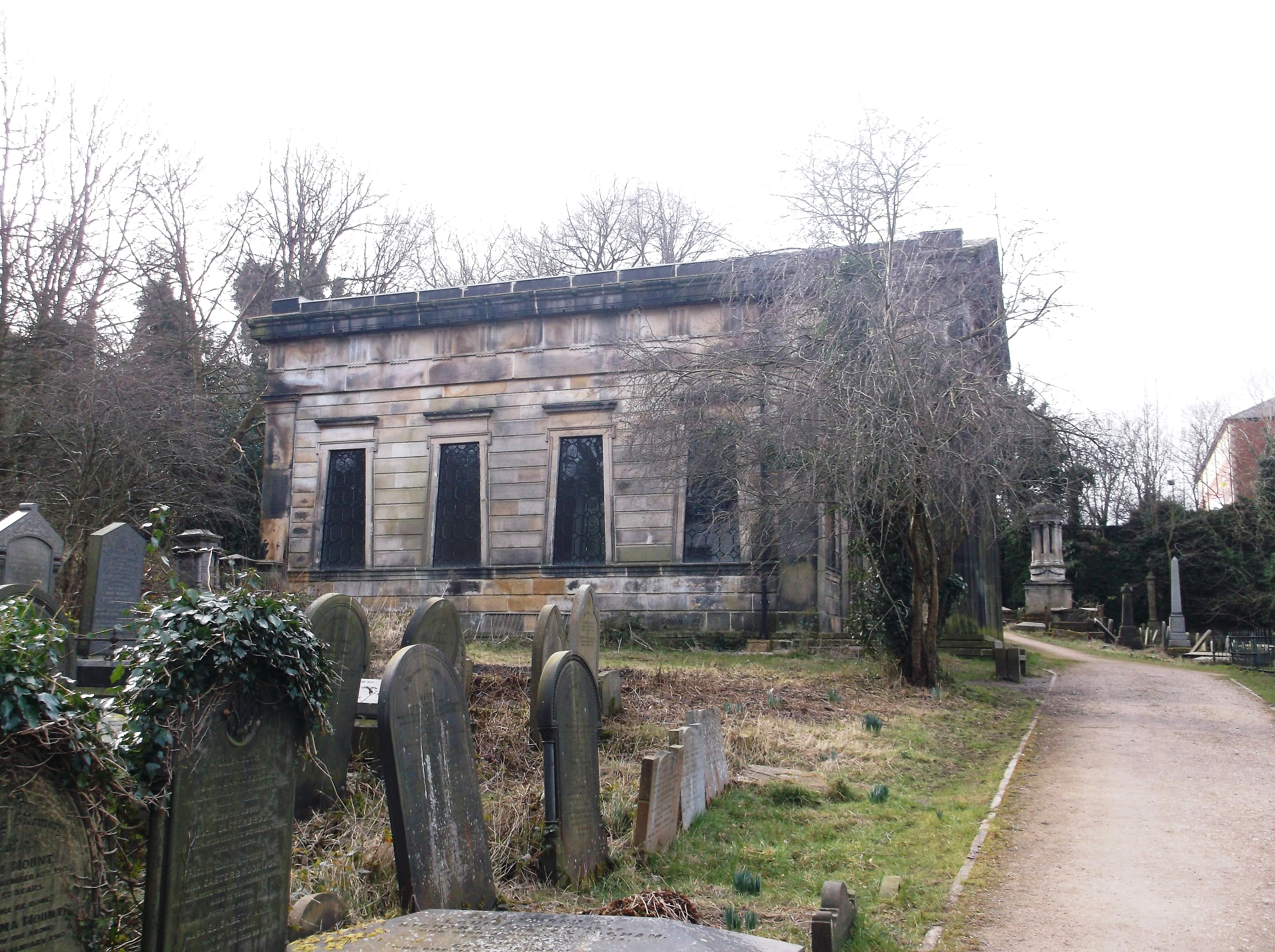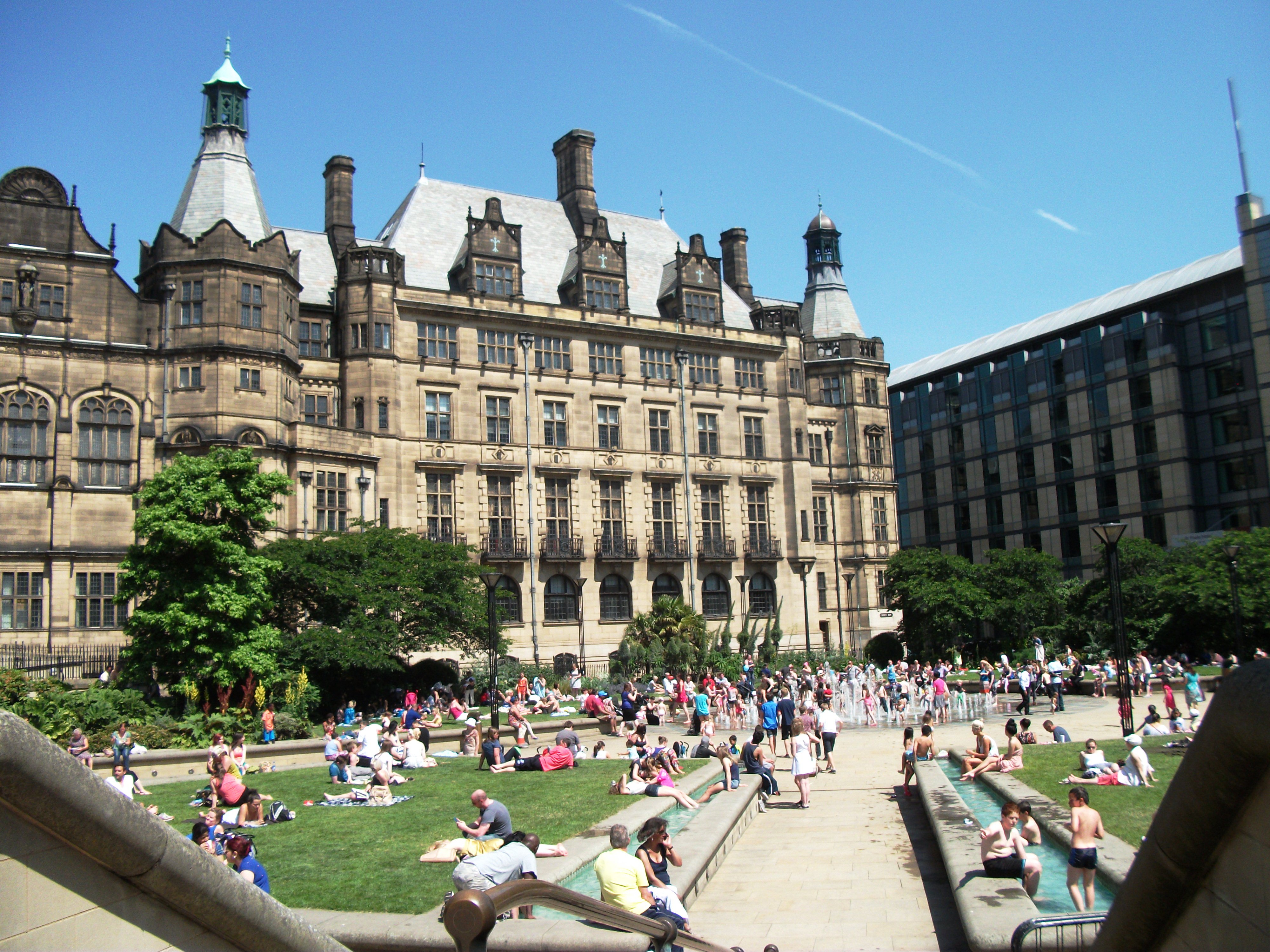“We have evoked a great deal of laughter at one time or another by referring to give possibilities of Sheffield being a health resort. But we were not so far out after all. Apparently if it had not become a great steel centre, it might have evolved along the lines of Harrogate or Leamington.” 1
I doubt anyone would ever have thought of Sheffield as a spa town with any real enthusiasm. In 1800, King George III was reputed to have said “Damn’d bad place, Sheffield!” But it is true that within Sheffield and surrounding areas there were many mineral springs, wells and spas, some articles suggesting that they were in use for their healing properties even before the Roman occupation.
The main Celtic tribe in the area was the Brigantes who worshipped Brigantia the goddess of springs, streams and rivers. It is tempting to believe that there may have been many springs sacred to the Brigantes in the Sheffield area during and before the Roman occupation. 2 3
With the conversion to Christianity, it was said that the church tried to stop the Pagan worship of the springs and wells, but eventually came to a compromise and gave them saints’names. In Sheffield there was St. Quentin’s Well Bradway, St. James’s Well Midhopestones, St. John’s Well, Beauchief Abbey, St. Ann’s Well, Smithy Wood, Woodseats, St. Anthony’s Well Crookes, St. Ann’s Well, Redmires. and St. Matthews Well Tofts,( also known as Matty’s Well) Rivelin Valley, and possibly Lady’s well in Grimesthorpe. 4
This Folklore is romantic but evidence that most wells go back to medieval , let alone went back to Roman or Celtic times is non-existent.
“Natural healing powers associated with the well waters became attributed to God and the saints, and pilgrims travelled long distances to be cured by the ‘sacred’ waters. In the 16th Century, following the Reformation, the saints were forgotten; but the medicinal reputation of the waters lived on and sites achieved new distinction as spas and perhaps more recently as hydropathic establishments. This story sounds entirely reasonable. But it is largely myth.” 5
Many were only given their saintly attribution in the 18th or even 19th century. It is likely that the wells at Beauchief Abbey and at Midhopestones are genuinely holy wells but clear evidence is sparse. Other wells and springs were given less saintly names. For example there were Dragon’s Well at Bolsterstone and another so named at Wharncliffe; Fulwood Spa; Sparken well or old wife’s well at Totley, Sparken being old Norse name, Dead Man’s well at Totley; Robin Hood’s Well, Bullstone Springs, Lord Edward Howard’s Spring and Lord Surrey’s Spring all on Howden Moor; Wild Well in Norton Woodseats; Carper Well in Ecclesfield, Brunsten Croft Spring on Broomhead Moor; Tommy Raw-head Well Hackenthorpe, Birley Spa, and a spa with no name in Cuthbert Bank Road Owlerton said to have been rediscovered in the 1860s, and a well mentioned in Sheffield Cathedral grounds, but none would seem to have a clear documented history. 6
The Roman Spas such as Bath and Buxton had fallen into disrepair by the time of the Norman conquest. Yet through the determination of John Villula, the Bishop of Bath and Wells, the baths were rebuilt in 1088 following the specifications of Roman temple precinct. Medieval history text Gesta Stephani noted how in 1138, “from all over England sick people come to wash away their infirmities in the healing waters, and the healthy gaze at the remarkable bubbling up of the hot springs.” 7
Beyond the City of Bath, ‘taking to the waters’ was met with fierce opposition from government and royal officials. Medieval church officials saw public bathing as a sinful practise. Nevertheless, many monasteries saw the springs, wells and spas as useful for their treatment of the sick and disabled. 8
Generally the monasteries and the churches were the only support for the poor when, ill, disabled elderly or left widowed. In Dronfield in Derbyshire the Guild of the blessed Virgin Mary, founded in 1349, set up an early health insurance scheme up to care for the poor and sick. Yearly contributions and bequests of land made it an extremely wealthy guild. Bequests of land to provide income to look after the poor and sick were not unusual. What was unusual was the contributory payments made by members of the guild which amounted to a very early sickness and death insurance. 9
The folklorist, Jeremy Harte, has listed about 900 wells in England (excluding Cornwall) of likely medieval origin, which equates to a density of five wells per 250 square miles. The density in Cornwall is much greater, at 18 per 250 square miles. In Yorkshire West Riding the density was 7.5 per 250 square miles. 10
The dissolution of the monasteries and the guilds meant the loss of medical assistance and insurance for the poor and they were delivered an extra blow by the dismantling of wells and closure of spas by Henry Vlll. In 1537, King Henry VIII proclaimed that anyone found relaxing in the waters of a public spa or hot springs would be apprehended and dragged, forthwith, to the Tower of London to be tortured. 11
The existence of so many designated holy wells became problematic when Henry the VIII split with the Roman Catholic Church in 1534. He feared the holy wells would be gathering places for Catholic dissidents and prohibited their use. The Roman Baths at Bath had an Abbey built over them at that time. Some major wells were dismantled, but most rural holy wells were small and unobtrusive and survived unscathed. Despite persecution, many laymen retained their faith in holy wells, which were often the scene of social gatherings in summer months. This, however, left many of the poor without the use of many of the springs and spas or the services of the monks and nuns who had tended the sick there. 12
The Suppression of the Monasteries Act was passed in 1539 and allowed for the dissolution of larger and wealthier monasteries or religious houses. The dissolution of the monasteries had an impact on the network of hospitals, leper houses and alms-houses that had developed around religious institutions. Hospitals were closed, and those who lived in alms-houses were forced out. The Guild of the Blessed Virgin Mary was closed down and their assets seized. The home of the monks that ran it is now a pub called the Green Dragon. Dole land (a source of income for care of the poor and sick) that belonged to churches and monasteries was also seized. The people of Sheffield of Sheffield appealed for the return of the land and the revenue from it. This led to the foundation of the Town Burghers who were given oversight of the land and is still in existence as the Town Trust.13 As the hospitals and alms-houses closed, those who lived in them were forced out. The King’s attention was now drawn to ‘those miserable creatures which do now daylye dy in the streets for lack of their due porsion’. 14
The other result of the closure of the wells was that the Catholic dissidents then went to European Spas “for their health” which although for some there was a genuine need, for others it was a meeting place for those who wanted to make England Catholic again. 15 The poor still kept attending the more isolated and less well-known Spas.
In 1536 John Blythe, an ordained priest, son of Richard Blythe of Norton, (now Sheffield previously Derbyshire) was appointed Regius professor of medicine at Cambridge University. 16 This was a ground-breaking post as never before had there been either a department of medicine or a professor of it. John was awarded a salary of £40 per annum for this post. In chancery John is seen as suing the estate of the late Bishop Geoffrey Blythe for money promised for John’s studies in Padua which is where he got most of his medical training. 17
John Blythe’s association with church and medicine was not unusual, bearing in mind that for most people medical care came through the monasteries. John Blythe was however also at the beginning of a separate secular standardised system of teaching for medical practitioners.
By the middle of the 16th century there were, in broad terms, a few physicians (mostly with a degree from Oxford or Cambridge) who diagnosed internal problems; barbers who conducted minor surgery such as bloodletting and drawing teeth, surgeons who carried out major surgery in the presence of a physician (both barbers and surgeons had generally been apprenticed), and apothecaries (also apprenticed) who sold drugs and sometimes treated patients. There was much overlap and frequent disputes between the various bodies: when physicians petitioned parliament to ask that nobody without appropriate qualifications be allowed. The earliest reference to medical regulation in the England dates from 1421 to practise medicine. The doctors said that unqualified practitioners caused “great harm and slaughter of many men”. 18
The best doctors were too expensive for the poor to employ, and many would not attend cases of typhoid or the plague. Homemade potions and cures were often the only medicines available. Also doctors and apothecaries were few, and the dissolution of the monasteries left many communities without care for their sick. It was the duty of an Elizabethan or Stuart housewife to ensure that such medicinal recipes were available to her family.
Many herbal medicines are recognizable as similar medicines today especially cough medicines. It seems on reading many books, that the day-to-day medicines for minor ailments were probably quite workable. However, the harder to treat and incurable diseases resulted in the bizarre and potentially lethal.
Gout – apply to the affected foot a mixture made out of worms, pigs’ marrow, herbs all boiled together with a red-haired dog.
Curing a girl whose arm wouldn’t stop bleeding after having a nail in her arm. Apply pig manure on it.
Cure of shingles, blood of a black cat’s tail with juice of houseleek and cream, and anointing warm three times a day
Rheumatism was treated by the patient being made to wear the skin of a donkey.
Bleeding at the nose stopped by frogs-A Young Man, the Son of a Yeoman living near Gaddesden, bled so violently at the nose, that all applications proved in vain, till frogs were made use of; and then, by their being bound to his neck, their cold nature entirely stopped it.
Deafness – mix the gall of a hare with grease from a fox. Warm the resulting concoction and place it in the ear.
A cure for the bite by a mad dog the person must plunge himself over head and heels in a pond for a month and every other day for a fortnight after.
A gentlewoman having a swollen infected hand put her finger into a cat’s ear, and within two hours was delivered of her pain; but the Cat was so pained, that two men could hardly hold her.
Cure for Whooping Cough, skin a field mouse and make into small pie to eat, the warm skin being bound hair side to the throat and kept there for nine days. 20
You can see why many would prefer the spa treatment to such outlandish cures. But how did the belief in healing waters come about?
“The healing properties of most mineral springs were discovered accidentally by local inhabitants who had received some benefit attributed to their use, and it was easy to believe that those who could speak from experience knew the powers of the waters better than the physician himself, however learned. Older springs still retained their traditional Christian connexions as Holy Wells, whilst their chemical contents, as of those more recently discovered, were unknown.” 21
Throughout Europe wells and spas that had at one time been holy sites of pilgrimage, many associated with healing, were adapted by Protestant reformers to fit their new model of faith. In Denmark, for example, belief in holy springs was initially abolished by royal decree in 1570, but when this was clearly ignored, they turned instead to emphasising that the healing power of the springs was due to the grace of God, not due to some saint or other force inherent in the spring.
In England a Protestant doctor, William Turner, 22 a graduate from Cambridge, became physician to Edward’s V[‘s uncle, the Protector Somerset. Somerset had control of many of the previously episcopal estates of Wells and Bath and replaced the Dean of Wells with Turner so he had control of the Bath Spas. The Spa at Bath had been a great source of revenue and local employment and Turner was keen to reinstate them. However due to the politics of the time Turner had to spend time in Europe and he used that time to study German and Italian spas. With the coronation of a Protestant Monarch, Elizabeth, Turner returned to England.
In 1560 Dr Turner published the first work on English mineral waters. Deploring the sorry state of Bath and Buxton, he exhorted his fellow-countrymen to a better use of their natural resources. Turner’s approach was a more scientific approach to the spas by the use of observation and analysis. He pushed for resident medical advice always being available at the spas. This meant that the poor who were treated there, as well as the rich, had access to medical advice. As a Protestant, Turner had several reasons for wanting the spas reopened other than financial ones.
There was the political reason for re-opening and promoting the English spas. 23 The spas in Europe were a gathering place both of English Catholic dissidents determined to overthrow Elizabeth and put Mary Queen of Scots on the throne, and Protestants who felt Elizabeth did not go far enough. Her government attempted to restrict people going to Europe by supplying passes only for those who had taken an oath to the Queen. Obviously if there were spas in England to the same standard as the continental ones and which had a strong record of effective cures there would be no reason to travel abroad for cures.
In 1569 the Earl of Pembroke’s second wife Catherine, daughter of George Talbot, 6th Earl of Shrewsbury, had a fatal illness. As a measure of desperation in 1575 Pembroke took her off to try the healing waters of spa, then known as Spaw, now in Belgium, from where he wrote to the queen and Lord Burghley; but the countess died that year. As a memorial to his daughter Talbot worked hard to improve facilities for the treatment of the sick and disabled at the spa at Buxton. The Earl of Shrewsbury built Buxton Hall in 1572 to enable he and his family to “take the waters”. The hall was situated over a natural thermal spring. 24
Elizabeth l revived the use of the spas after a visit to Bath in 1574. She said that the public must have access to the springs, and allowed people to drink and bathe in the waters, providing no miraculous element was involved. Cures no longer relied on the blessings or actions of some saint, which were incapable of analysis, but on some property of the water itself.
This led to the growth of ‘spas’ (named for the town of Spa in present day Belgium, where people could both drink and bathe in medicinal waters). Spa wells were nearly all new foundations and were rarely ‘reincarnated’ holy wells. This is because the feature of holy wells was their pure and wholesome water, whereas spa waters were generally characterised by their distinctive (and generally unpleasant) taste, derived from high concentrations of dissolved minerals. There were exceptions: St Anne’s Well in Buxton made the transition from holy well to spa because of its thermal properties. 25
In Buxton Shrewsbury was having to increase lodgings for the nobility to visit. Buxton’s most famous visitor was Mary Queen of Scots, who was in Talbot’s custody for 14 years in Sheffield Castle and his Manor Lodge in Sheffield. Her repeated requests to visit the Buxton Baths to treat her severe rheumatism brought about her confinement in the cold damp Sheffield Castle was both embarrassing for English Government and concerning, as they feared Mary would get the chance to plot with the nobility who visited there. Apart from Shrewsbury’s interest, a gentleman of her household, Robert Tunstead, was a native of Buxton. Elizabeth allowed Mary to go there in August 1573 since Shrewsbury guaranteed her security. After a stay of five weeks, she longed to make return visits and went altogether nine times. In 1576 she wrote to Elizabeth of the improvement of her health. Shrewsbury again reassured the government about security in 1580 saying the beggars now wanted her gone so that they could be allowed to return to the town. In 1584 Mary was to have her ninth and last visit to Buxton. Buxton was so popular with the nobility they often had to double up in the fairly small Shrewsbury’s home. The patronage of Mary and Shrewsbury made Buxton a social magnet for the nobility, and it was a profitable investment for Shrewsbury who supplied both lodgings and food. One estimate was he was making between £3,000 and £4,000 annually but the Earl of Leicester thought that was probably too high an estimate. Elizabeth herself never visited Buxton though she did request a supply of Buxton water to be sent to her.
The government had become alarmed about who was gathering at Buxton Well. They were concerned about the visits of Derham, a priest from Norwich in 1578 and about the activity at Buxton during the Babington plot for Anthony Babington of Derbyshire had a house at Dethwick near Matlock. Sir Thomas Gerrard and others there planned to free Mary Queen of Scots, and a general meeting of priests was arranged at Buxton. In 1593, a rebel priest, Francis Ridcall, fled to Buxton to meet Sir Robert Dorner and other papists, but he didn’t stay long and hid in a wood. Mary Queen’s execution in 1587 and Shrewsbury’s death in 1590 shifted political attention from the North and Buxton lapsed in importance.
The belief in the healing waters of the local mineral springs in Sheffield had always remained strong. It’s difficult to know how many local Spas were still in use and which had been discovered after 1700. We know of one in Fulwood deemed to be “cold beyond any other” by Dr Short in 1734. The Historian Joseph Hunter suggested that many had used the spring to ward off the plague in 1665 and a constable was paid to keep people away. It is understandable why so many looked for cures from the springs and spas when you read Samuel Pepys’ words in his diary.
“6th October 1665: But Lord, how empty the streets are, and melancholy, so many poor sick people in the streets, full of sores, and so many sad stories overheard as I walk, everybody talking of this dead, and that man sick, and so many in this place, and so many in that. And they tell me that in Westminster there is never a physician, and but one apothecary left, all being dead – but that there are great hopes of a great decrease this week. God send it.” 26
Queen Mary Henrietta was said to be cured of her infertility in the Chalybeate Spring in 1629. Her son, and the English Court, often made the 50-mile trip from London to Tunbridge Wells, fondly known as the ‘courtiers’ spa. Its Chalybeate Spring (name derived from the Latin word for ‘steel’) containing a particularly high iron content. Charles II visited the town in 1663 and 1664 with the same hope of his Queen Catherine conceiving his long-awaited heir. So the spas were still fashionable by the time the Plague hit. 24
In 1696 the warm waters flowing from the hillsides near Cromford were commercialised by Rev. Fern of Matlock, (Now husband to the widow of William Blythe of Norton Lees ) and Mr Hayward of Cromford. The first bath, made of wood and lined with lead, was fed water from a thermal spring with a constant temperature of 68 deg F. The purpose being hopefully to bring investment and tourism to Matlock. In 1698 the Bath and rights were sold to Messrs Smith and Pennell of Nottingham. The area became known as Matlock Bath. 28
In the early 18th century Birley Spring near Handsworth was open to bathers in a fairly rudimentary fashion. Fulwood Spring was covered over giving the bather some protection from the elements and some privacy.
The growth of the medical profession as a whole, and its increased status, assisted the proliferation of the spas. The eighteenth century has been called ‘the great age of the apothecaries’: in 1703 their standing was enhanced when the House of Lords ruled that their function was not only to compound and dispense but also to direct and order the remedy for disease. Apothecaries previously only supplied drugs to doctors, rather than prescribed medicines themselves. They trained through apprenticeships and, from the 1500s, some studied at university too The growth of the medical profession as a whole, and its increased status, assisted the proliferation of the spas. The eighteenth century has been called ‘the great age of the apothecaries’ ; in 1703 their standing was enhanced when the House of Lords ruled that their function was not only to compound and dispense but also to direct and order the remedy for disease. Now the local apothecary could join the physician, and prescribe bathing at a local spa.
The urban spas which emerged as Bath’s rivals in the eighteenth century were one aspect of the contemporary spa mania; there was also a plethora of new minor spas as accumulation of capital from agricultural, commercial and, later, industrial profits gave surpluses not only for more travel but for investment in spa projects. The landowning classes not only founded the spas but with the middle and professional classes, especially the clergy and medical men, were the consumers of their health and entertainment services. But although the pacemakers in both the promotion and patronage of spas were the leisured people, the taking of mineral waters for health reasons was not their monopoly, for the poor were frequently provided for.
It was said that there were over three hundred villages and towns that might be called a spa or spaw for having a spring of mineral water. Such springs and wells were present throughout England, but not all were developed into spa towns.
Thomas Short, after graduating in medicine in Edinburgh, settled in a practice at Sheffield. He made several journeys to visit the mineral springs of Yorkshire and of other parts of England. He published in 1725 ‘A Rational Discourse on the Inward Uses of Water’ 28 and in 1740, Short listed 228 mineral wells in his history of Mineral Waters, but only a few of them blossomed into health resorts. He only listed 2 in great detail in Sheffield, and two others in Darnall and the Ponds area in Sheffield he named as poor; none were known as Holy wells. Many only attracted a local clientele and their fame did not stretch beyond the limits of the county. Among the wells which became spas, many never reached what geographers call ‘urban status’. Dr. Short was a methodical man with an enthusiasm for water, especially mineral water. He not only listed as many mineral springs and spas as he could, he tried to ascertain by rudimentary chemistry what minerals the waters contained and what diseases they might be best at treating.
Most of the available tests were qualitative, lacking precision, even though the need for improved accuracy had been recognized. The importance of careful observations was regarded as paramount, although these were mainly concerned with the colour, taste, and smell of the water, together with its effects on galls and a few other vegetable extracts. Acidity was often recognized by testing the water for its power of curdling milk as well as its reactions with oil of tartar and other alkaline substances. Mineral waters were frequently found to deposit an earthy sediment, or ochre, on standing -a fact which was taken as a clear indication that some continuing chemical process was involved.
Short also gathered statistics from a number of areas to make comparisons on life expectancy depending on the geology of the area and chemical composition of the drinking water. 31
William Buchan took up a practice in Sheffield from 1761 until 1766. Yet another Scottish graduate who was welcomed in Sheffield. When Buchan returned to Edinburgh, he published his famous work Domestic Medicine.32 The first edition sold for only six shillings and was a great success. Domestic Medicine went on to sell over 80,000 copies, and 19 editions were printed, translated into almost every major European language. In it he addressed new health areas such as industrial diseases. The writing of Domestic Medicine took place near the start of the Industrial Revolution and was welcomed by the industrial workers. Generally, these industrial diseases and cures suffered from second hand observation rather than more stringent clinical observation; however, their promise of better health garnered general support.
Buchan did just use spa water therapy but also used other forms of therapy using water. The type of bathing prescribed depended on the nature of the condition and how advanced it was. It could take the form of: full body bathing, head bathing, leg bathing, or feet bathing. It could also be either fresh water bathing or sea water bathing. It could be hot, cold, warm or tepid bathing. Or, indeed, cold water injections (i.e. enemas). There was also steam bathing, spray bathing, bandage bathing and mud bathing. And it could be shower bathing or seated bathing or, as one prescription is described, ‘Cold Bath of Pails of Water thrown upon me from Head to foot’
Uniquely, it is possible to access the treatments that Buchan prescribed for his patients online. at http://www.cullenproject.ac.uk/(link is external))
The spas were still popular in the late 18th century. Buxton had remained unchanged till the 18th century when the 5th Duke of Devonshire started spending money on it, beginning with the building of the crescent which included the grand ballroom and assembly room. Building was completed in 1788.
With the growth in size and wealth of Sheffield , in 1789 subscriptions amounting to £15,000 were collected to build an infirmary for Sheffield and hospital was opened on the 4th October 1797. The main entrance featured two niched statues of ‘Hope’ and ‘Charity’ A biblical inscription above the door read; ” I was sick and ye visited me, verily in as much as ye have done it unto one of the least of my brethren, ye have done it unto me” 33
With accommodation for around 100 in-patients, its senior staff comprised three physicians, three surgeons, and a Matron. Medical provision was becoming a reality for many not just the wealthy.
“Of all the virtues which form our national character, that of mercy and compassion may be justly esteemed the highest ornament.” Dr. William Younge 1789 Sheffield.
At the time of the foundation of the hospital, medical education was largely based on apprenticeships. The apothecaries, who then did much of the family practice in the country, were required to serve for five years as indentured trained as apprentices and also surgeon’s “mates” in the army. Physicians too, frequently had short periods of apprenticeship, but to them it was of much less importance than the other two branches. The would-be physician had first to graduate in the arts and become proficient enough in classical scholarship to read Galen and write a commentary in Latin as a thesis for his medical degree. It is true that the regulations of the ancient universities called for something more than this. In one a candidate was required to attend the lectures of a regius professor of medicine during three terms, to witness two dissections of the human body, and to “keep an act” – that is, to make a dissertation before his teachers and defend it. But early in the nineteenth century official inquiry established that, though many doctorates of medicine had been conferred on members of this university, no regius professor had lectured for more than a hundred years. 34
The first incidence of cholera in England occurred in Sunderland in October 1831 when a ship, carrying sailors who had the disease, docked at the port. The ship was allowed to dock because the port authorities objected to, and therefore ignored, instructions from the government to quarantine all ships coming from the Baltic states. From Sunderland, the disease soon spread.
From its point of origin in Bengal it took five years to cross Europe, so that by the time it reached the UK, doctors were well aware of what cholera did but they neither knew how to prevent the or spread of cholera or how to treat cholera patients. There were two medical theories related to the spread of disease in the 1830s. One was that disease was transmitted by touch (contagion) so doctors wanted to isolate patients. The other theory was the miasmic theory, which taught that disease was spread by bad smells, bad air or ‘poisonous miasma’. There were plenty of bad smells in Sheffield. In November 1831 cholera broke out in Sheffield with the death of a woman and a middle-aged man. 35
Orders were issued for the lime-washing of houses to try to clean them up. Barrels of tar and vinegar were burned in the streets to try to remove the bad smells. None of these efforts had any effect whatsoever. Many authorities, since the disease hit the poor first and hardest due to their cramped lifestyle, blamed the poor for their sinful lifestyle, such as drinking, families sharing beds and other immoral “habits”
As soon as it was obvious that cholera had struck Sheffield, the police, in what is now the old Town hall, were mobilised to supervise the quarantine of patients, the removal and burial of bodies to be buried at night and as the disease progressed the closure of all graveyards to burial of the cholera Victims and instead bury them all together rich or poor in Park Woods where the Cholera Monument still stands. 402 people had died in that first outbreak. There were to be 3 further outbreaks in 1848-49, 1853-54, and 1865-66. At the end of the Cholera outbreaks 1,345 people had died from the disease.
The first epidemic killed over four hundred people, mainly in the slum districts on the banks of the rivers Don and Sheaf. The local authorities attempted to thwart the disease by hastily implementing sanitary and medical preventive measures. As was the case elsewhere, these measures were resented by the poor.
The first public baths in the city were opened in 1836 in Glossop Road, following the cholera epidemic of 1832. At the time the theory was that the disease was spread through the poor’s lack of hygiene. The problem with that was when the next outbreak of cholera hit the well-meaning health committee actually spread the cholera by using the contaminated river water to clean areas. 37
The erection of baths and wash-houses was aided by the Public Baths and Wash houses Acts of 1846 and 1847. These acts enabled parishes and town councils to build public facilities, meeting the construction cost out of the Poor Rates, and repaying this within a fixed term. The 1846 Bill was introduced by Sir George Grey, but the main case for the Bill was made in the House of Lords by the Bishop of London. He made several statements about cleanliness, arguing that the ‘subject nearly concerned the moral as well as physical welfare of the humbler classes of population’, and suggesting ‘that overcrowding and want of cleanliness caused an aggravation of the general type of disease in the metropolis’ He also presented petitions, from the Committee for Promoting the Establishment of Baths and Wash-houses for the Labouring Classes 36
Sheffield Town Council had already appointed a Health Committee in 1846, and passed a bye law in 1847 to tighten public health regulations and in 1848 commissioned its own sanitary survey of the town.
Cholera is a bacterial infection caused by contaminated water or food. In London in 1854 Dr. John Snow conducted pioneering investigations in Soho looking at the spread of the disease there and managed to isolate the cause to one street water pump which he proved was true by simply taking away access to the water from the pump by removing the handle. Snow had suspected this for some time before he managed to prove it. Even a hundred years earier, Short had written that not all water was safe.
“That water we generally repute best for drinking or dressing Victuals, which is clear, light, insipid: The lighter it is so much less Salts or mineral particles are in it; therefore Rain Water having few eft of these should be wholesomest ; but being full of volatile Particles , it presently stinks and becomes nauseous ; therefore that is to be preferred which comes through Chalk or Limestone , light Gravel , or fine Sand . River Water is next, but liable to the fame Inconveniencies of Repletion with earthy vegetable or mineral Salts, which it washes in its Course. Well – Water is bad, but Pond Water worst of all, being only Rain Water, stuffed with hurtful Parts, taken from that Earth where it stands, without Motion, and is very apt to purify.” 30
In 1841 A.B. Granville published The Spas of England. This fashionable London physician mentioned 70 resorts including sea-bathing places. This figure indicates the decline of inland spas when compared to the 228 springs mentioned by Thomas Short a century earlier, while it shows at the same time the growing importance of seaside towns, soon to be increased with the development of the railways. 38
John Smedley was a local hosiery manufacturer who made a recovery from typhus at the age of forty-three at the newly-opened Ben Rhydding Hydro near Ilkley. He felt he owed his life to an innovative form of water-cure, hydropathy, a system of baths, compresses and treatments in mineral-free water to expel morbid impurities from the body through “putrescent excrescences”. 39
In 1853 he bought a small private medical establishment serving six patients and developed it into the huge Smedley’s Hydro on Matlock Bank. it was Smedley whose conviction and enterprise established Hydrotherapy firmly in Matlock, and for a century made it one of the most celebrated centres of the “water cure”.
“I took a few men, upon whom to try the Hydropathic remedies, which proved successful; and many more making application, I made a place for the free board, lodging and baths to a certain number of males and females: and hundreds since have found restoration to health and body, and peace of mind, through the renewal of the Spirit … we made our house a free hospital, until we found we could not afford room enough. I then bought a small house at Matlock Bank for six patients, board, lodgings and treatments at 3s. per day. Soon again we had to refuse applicants”.
The People’s Spa
Birley Spa was actually in Derbyshire till 1967 but its links to nearby Sheffield were always strong long before the border was changed. The early history of Birley Spa at present has no clear documentary evidence before the 18th century though many people maintained it had been used for centuries and although the present Bath House was built in 1843 there are accounts of bathing before that date at least back to 1700s. One of the problems with Birley is that the records of the area are scattered amongst several archives but also that the spelling varies and the address changes to as to whether linked to Beighton or Hackenthorpe, Derbyshire or Sheffield.
Platts 40 mentions in his publication on Birley Spa that a headstone was found in the grounds bearing a date of 1701. A report claims that it was built by a Quaker man named either Robert or William Sutcliffe and there is evidence of a Robert Sutcliffe living in 1786. The same report states the building was made of stone and was almost square. The interior of the building featured a bath filled with very cold, clear water fed by an underground natural spring. There were rings around the sides of the bath so that people could take hold, and an area for people to dress and undress. Although at first permission was required to bathe, in later years anyone could attend. A bolt was fixed to the inside of the door so that intruders could not enter when occupied. This earlier iteration of the bath was in order in 1793 and later a large hollow filled with large stones was all that remained of this site.
In 1841 Mr James Newton and Mrs Smilter-Lowe returned from the Isle of Man. They had been there for health reasons but felt no better. A physician suggested to them that the waters of Birley Spa could help. However, when they went to the spa it was in ruins. They set about collecting public donations to restore the spa, and employing people to rebuild the walls and make the basin water-tight. It turned out to be more expensive than they had thought and several years on, one of the workers took them to court for non-payment. 41 However, the spa itself was attracting interest now it was back in use.
Charles Herbert, second Earl Manvers, who owned the land, and who also had the undeveloped Orston Spa on his Nottinghamshire estate and the Kingston Rooms at Bath, assembled for Birley a committee of four, including Thomas Staniforth, the largest manufacturer of sickles, reaping-hooks, and scythes in the country, and empowered them in 1842 to build a large establishment with seven baths Prior to construction in 1842, Lord Manvers had plans drawn up for a bath house, combined with a hotel, the grounds were to feature seven grottos and two bridges would cross over the stream which flowed down through the valley. A description from the Gazetteer and Country Directory states ‘…respectable and commodious establishment with seven baths of various dimensions. Situated in a sylvan and rural glen entirely surrounded by romantic hills, tastefully laid out’
No grottos have been found and only one bath remains. Nor does there seem to be any sign of a hotel, merely the Bath House. Some confusion has arisen with some historians, because later on the Bath House was renamed as an hotel, but there is no evidence of any accommodation being available in the early years. Did they fail to get the investment they needed?
Three things are said to be necessary for a successful spa: a history of the spring’s medicinal qualities, which it certainly had; accessibility which was also easy, especially with the introduction of the railway; but the third was the quality of accommodation available to visitors on a par with the hotels at Matlock, which Birley Spa did not have.
Thomas Staniforth, was chosen to manage the committee by Lord Manvers. Thomas was appointed with the task of forming the committee himself and chose his son-in-law George Cox, who was a local farmer, schoolmaster John Tillotson and farmer Edward Hobson.
An advertisement was placed in The Sheffield & Rotherham Independent on the 25th March 1843 which requested applications for a couple ‘of good character and without family’ to take on the management of the hotel. George Eadon was chosen out of the eleven replies, he was a married man who was paid a salary of £20 annually, with free rent and coal. 42
Birley Spa
We believe that the credit is due to the Mercury of having roused attention to this once celebrated spot-on account of the virtue of its waters, and the benefits which invalids would derive if they are made available. We were gratified in visiting the place in the course of the week to find out that out of the ruins of the former bath, a new one had been erected with convenient dressing rooms, a hot slipper bath, and two basins to cover the other springs which bubble out of the same spot. From what has been already done, and the design for laying out the adjacent ground in walks and a promenade, the health and comfort of the future visitors appears to have been studied, and if one half of the miraculous cures ascribed to the waters by the neighbouring country people be correct, Birley Spa will not be behind the most renowned of our watering places in its healing properties. The large bath is commodious, with water as pure as crystal, while immediately behind it is a chalybeate spring, judging from its ochre deposit, and another charged with saline ingredients. We understand that Lord Manvers, the proprietor, has erected the building at his own cost, and that some private gentlemen have guaranteed him against loss in the speculation, and we have no doubt that when its virtues become known, its proximity to Sheffield, with the advantage of good roads, will soon make it resorted to by those in search of health who cannot spare the time or the money to go to more distant places. The bath house is delightfully situated, and from whatever side it is approached the scenery is of the most beautiful character, and will repay the rambler and admirer of nature for his walk. We expect soon to be able to furnish our readers with an analysis of the different springs, and point out the cases in which the waters are likely to be beneficial. 43
The spa was well publicised and soon had a prestigious visitor, The Duke of Portland, a neighbour of Manvers, who no doubt came at the urging of Manvers and because the duke who was also almost a recluse, the quiet solitude of the spa was probably an attractive feature, but after a few visits he was never seen again at the spa.
The local estate agents obviously had high hopes that the spa would lead to popularity of the area as it had so many years ago in Matlock.
TO BE LET
A Farm about Fifty-four Acres of Arable Land, within a Ring Fence, together with large Garden, Orchard, and Convenient House and Outbuildings, situate at Hackenthorpe, Four Miles and Three-quarters from Sheffield, seven from Rotherham, and nine from Chesterfield. The whole of the land is well supported with good Water for Cattle. Hackenthorpe is a very healthy Village, the Neighbourhood of which is now famed for the celebrated Birley Spa, likely to become a popular Watering Place. 44
The baths were off to a great start. Thomas Staniforth kept up with his duties keeping accounts. Initially ticket sales were encouraging with family and friends of the workers being amongst the first visitors to attend. Thomas’ s sister Sarah Ward came along as did his cousin James Staniforth from The New Inn with his wife Martha (nee Green). Another cousin of Thomas’ s, Ralph Haigh also attended as did his son Thomas Staniforth IV. The local schoolmaster Mr. Tillotson promoted the baths, buying tickets for a number of people including John Jubb of Drake House, and the Reverend Thomas Mountain, rector of St. Mary’s Beighton. Dr. Flory from a nearby boarding school also brought along a group of children.
Looking at what was happening at the time of the spa re-opening the timing could not have been worse. Banks and finances were collapsing due to lack of trade caused by unrest in Europe and the Corn Law sanctions on imported grain making trade with America also difficult. The high cost of food due to artificially high prices and the added Cholera pandemic outbreaks created an impoverished Sheffield not able to spend time and money at the reopened spa
There was a lot of initial excitement and possibly the locals dreamed of becoming a new Matlock bath with hotels springing up and a rise in tourism, but as coal mining grew increased and the spa lacked facilities for big parties of the wealthier clients, who in any case were following the new treatments such as hydrotherapy or following the fashionable to sea bathe, it was unlikely to be anything but a place for local working people. The new bathing facilities provided in the city may also had to have an impact.
There were, of course, a number of expenses, advertisements had to be paid for, as did the printing of the tickets, alcohol, bills from the Sheffield Coal Company and so on. Not to mention George Eadon’s salary. In May and June 1844 payments were made for meat and beer ‘at rearing’ which was a term used when a building was ‘topped off’. This shows evidence that the spa was still being extended at this time. Other expenses George Cox was paid £10 for furniture and in August 1845 he is paid £21 ‘1 year of interest’ which shows he must have lent money to the spa, and at the time, this was a substantial amount.
By May 1847 George Eadon was sole proprietor and announced refurbishment to the tepid baths and a price list. Season tickets (without the marble bath) for families £1 5s 0d, two in same family £1, One-person 12s., Single Baths Marble hot Bath, 2s., Hot Bath 1s 3d., Shower 9d., Tepid swimming 9d. Cold Swimming 6d. The price range suggests several baths in use and two big enough to swim in. Eadon is also offering alcoholic refreshments and cigars. 45 Eadon’s proprietorship did not last long because by March 1848 the Spa was vacant and advertised to Let. 46 By April 27th 1848 the Spa was back up and running though the proprietor is unknown. 47
In 1851 one problem that became visible was in a report about the Guardians of the Sheffield Workhouse where a Mr. Le Tall, a doctor who attended the poor from the workhouse in Sheffield sent to Birley Spa, complained that he had not been paid for 2 years. The poor were housed in rented cottage accommodation and possibly the spa was left with paying the rental of the cottage. 48
In 1852 yet another proprietor announced his presence with the spa now titled Spa and Tea gardens. The gardens being laid out, Mr. William Budd claimed, in a style adapted alike for the invalid and the pleasure seeker. He also gives a detailed description of the mineral content of the waters as well as a glowing account of the spa’s facilities.
‘The rooms for the accommodation of Bathers are convenient: there are Marble, Copper, Shower, Tepid, and large plunging baths, with Dressing Rooms attached. The House is a neat fabric, and suited to every sort of company.’ 49
A short advertisement in 1855 advertises furnished rooms in addition to spas facilities 50, but in 1855 William Budd was also selling the household contents. 51
Household furniture and other effects included French and four poster beds and hangings, two goose feather beds, bolsters, and pillows; twenty yards of crimson Brussels stair carpeting, tapestry floor carpeting, Scotch floor and bedside carpets, hearth rugs and wool rugs, cane seated bedroom chairs, set of drawers, mattresses, wash and dressing tables, hair seated chairs, mahogany card and other tables, eight days clock in oak case; piano forte, weather glass, bronze tea urn, handsome silver-plated tea and coffee pots, cake basket cruets and salver, twelve ivory hafted knives forks tea and table spoons, table lamp, floor and passage oil cloth, oil paintings and engravings, mahogany writing desk, set of handsome trays, patent mangle, chimney and dressing mirrors, set of china, bronze fenders and fire irons, flour bins, two large brewing tubs, copper kettles, brass pans, brass roasting jack, chimney ornaments, books, and maps.
The auction list gives a snap shot of what the fully furnished Bath House looked like. Yet although the list was comprehensive William Budd is still in charge in 1860.52 By 1863 the proprietor was a James Plant and was prosecuted for giving short measures. 53 In 1866 proprietor Alfred Lee was announcing their annual festival at the beginning of the season and the opening of the Spa bathing facilities. 54 This was not to last as once again Birley Spa was up again for rent but with the emphasis on market gardening. The description although still mentioning the bathing facilities, mentioned a vinery and greenhouses in good order. ‘ A first-rate opportunity for a Market Gardener!’ 55
In 1868 the Sheffield Workhouse cancelled their agreement with Birley Spa on the grounds that it was not well used and Buxton was offering a cheaper deal. 56
In 1869 the proprietor, Mr John Bradley advertised the festival at the opening of the Spa’s bathing facilities including amusements and a donkey race. 57
The hotel closed in 1878 and was converted to two cottages some time later, the heated pool had been removed by 1895. But it would appear that the proprietor George Platt had begun developing part of the area as a pleasure ground. As in 1912 George Platt sold up some of the contents prior to Earl Manvers sale of the property. Interesting items were swing boats, pleasure horses and gondolas. 59
In 1912 the 4th earl, Charles Pierrepoint put the bath house up for sale. In 1912 it was purchased, together with two cottages for £630, by a cab owner George Moulson. 60 Moulson possibly also bought the swings and so on from George Platt. Moulson and his partner William Smith developed the Childrens Pleasure grounds. It is suggested they dug out around the stream to make a pond that was used as a boating lake, above it was a paddling pool. In the garden was a wishing well, there were swings at the other side of the building and a sandpit. There was also a Wonder Tree, a gnarly and twisted old oak where, it was claimed, you could make out pictures of animals in its branches. Entrance to the pleasure grounds was through a turnstile and tea and hot water were available. Although this is not shown on the original plans, there is evidence that tennis courts and a pavilion were added at a later date.
The pleasure grounds appear to have been the most successful era for the Spa, for working class families, Sunday school trips etc., it catered to a huge audience and had many returning visitors. In 1929 with the death of George Moulson the Spa and grounds once again came up for sale and appear to have been bought by his partner William Smith. 61 62
At the outbreak of WWII, a law was passed prohibiting people congregating in groups, due to the threat of air raids, this forced the closure of the grounds in 1939, never to reopen. In the 1950s the site came into the possession of the Sheffield Housing Department. There is evidence that in 1958 Sheffield Corporation staff society had formed an angling club and stocked Birley Spa Pond with fish and had sole use of the pond. 63
In 1960 the council proposed to demolish the Bath House. The City Architect, Lewis Wormesley, presented an alternative scheme to retain the buildings as a community hall and this was partially completed in 1966. On the 28th June 1973 the building was awarded Grade II listed status.
Although some essential maintenance was carried out in 1986, the site suffered increasingly from neglect and vandalism until in 1988 the City’s Countryside Management Unit began a programme of conservation, interpretation and restoration, involving local schools, community groups and the frogmen from South Yorkshire Police. The initial aim was to recreate the spa as a local amenity, as it was at two distinct periods in its history, initially by encouraging its use as a pleasure ground, and later by restoring the bath to use and perhaps marketing the mineral water. Birley Spa for a while was used as a venue for wedding receptions due to refurbishment funded by National Lottery funding. However, vandalism and problems for groups getting access to the building led Sheffield Council to decide sale of the building was the only option. This has caused huge outcry by the local population, who formed the Friend of Birley Spa with over 2,000 supporters, and are now trying to take back the Bath house and grounds as a community asset, and bring it back into use as a place to educate on and encourage a healthy lifestyle in an area that at present is one of the unhealthiest places in the UK. 64
Some of the old wells and springs remain in the area, and hints of others, not confirmed, but who knows they may yet be found. But of the two other spas mentioned, Fulwood Spa and the spa at Owlerton only some conjecture and vague hints remain.
Sources Spa
- Birley Spa, Sheffield Daily Telegraph, Thursday, November 13th 1919
- Brigantia said to be the goddess of springs streams and rivers. https://ericwedwards.wordpress.com/2015/03/12/brigantia-goddess-of-the-brigantes/
- http://www.antipope.org/feorag/wells/perth-talk.html
- Springs and Holy Wells Sheffield area https://www.megalithic.co.uk/article.php?sid=46610
- https://www.geolsoc.org.uk/Geoscientist/Archive/September-2016/Wonder-working-waters
- Addy Sidney Oldall, (1888) A glossary of words used in the neighbourhood of Sheffield
- https://goodspaguide.co.uk/features/spa-through-the-ages
- https://www.medievalists.net/2013/04/did-people-in-the-middle-ages-take-baths/
- https://dronfieldhallbarn.org/partners/local-history/
- https://www.geolsoc.org.uk/Geoscientist/Archive/September-2016/Wonder-working-waters
- https://www.foreo.com/mysa/the-criminal-history-of-the-modern-day-spa/
- https://navigator.health.org.uk/theme/hospital-closures-following-dissolution-monastries
- http://www.sheffieldchurchburgesses.org.uk/history-of-sheffield-church-burgesses-trust.htm
- https://historicengland.org.uk/research/inclusive-heritage/disability-history/1485-1660/hospitals-and-almshouses/
- Ghazvinian, J. (2003). A certain tickling humour : English travellers, 1560-1660 [PhD thesis]. University of Oxford.
- https://www.genealogieonline.nl/en/fox-anderson-and-taylor-families/I6207.php John Blythe Regius professor
- Court of Chancery Six Clerks Office: Early Proceedings C1/1105/36 John Blythe of Cambridge, late archdeacon of Stafford v. John Oteley gentleman, administrator of the goods of Jeffrey Blyth, bishop of Chester, deceased: Loan by the said bishop to enable complainant to study at Padua. (National Archives)
- https://dayofdifference.org.au/e-medical/english-medical-regulatory-history.html
- https://www.historylearningsite.co.uk/tudor-england/tudor-medicine/
- Cawthorne Nigel 2005 The Curious Cures of Old England, Piatkus Books Ltd, 5 Windmill Street, London WIT 2JA
- Bathing by Prescription: A brief history of treatment by water. Royal College of Physicians of Edinburgh. https://www.rcpe.ac.uk/college
- William Turner, A Booke of the Nature and Properties as well as of the Bathes in England and of other in Germany and Italy, very necessary for all sick Persons that cannot be healed without the help of natural Bathe, 1562.
- Higginbottom Mike Taking the Waters: the history of spas & hydros. The Legacy Chesterfield Hotel, Malkin Street, Chesterfield, Derbyshire, S41 7UA
- Hunter Joseph, Hallamshire. 1819, The History and Topography of the Parish of Sheffield in the county of York
- Gatty Ivor, The Site of Fulwood Spa, Friends of Manor Lodge.
- Diary of Samuel Pepys https://www.pepysdiary.com/diary/1665/10/16/
- Hembry Phyllis, 1990, The English Spa 1560-1815, A Social History, the Athlone Press, 1 Park Drive, London NW11 75G
- https://www.andrewsgen.com/matlock/matbath_intro.htm History of Matlock Bath
- Short Thomas, 1733, The Natural, Experimental, and Medicinal history of mineral waters of Derbyshire Lincolnshire and Yorkshire
- https://goodspaguide.co.uk/features/spa-through-the-ages
- Short Thomas, 1725, A Rational Discourse of the Inward uses of water
- Short Thomas, 1750, New Observations natural moral civil political on city town and country bills of Mortality
- Buchan William, 1769, Domestic Medicine or a valuable treatise on the prevention and cure of diseases by Regimen and Simple Medicines.
- https://www.routeyou.com/en-gb/location/view/48027279/sheffield-royal-infirmary
- Thomson Arthur 1960, History and Development of Teaching Hospitals in England, The British Medical Journal Vol 2 No.5201 (Sept 10, 1960) pp 749-751
- Stokes John, 1921, The History of the Cholera Epidemic of 1832 in Epidemic, Sheffield.
- Sheard Sally, 2000, Profit is a Dirty Word: The Development of Public Baths and Wash-houses in Britain 1847-1915 The Society for the Social History of Medicine.
- Sigsworth Michael, Cholera in the large towns of the West and East Ridings, 1848-1893, thesis Hallam University Research Archives
- Granville AB, 1841, The Spas of England and Principal Sea-Bathing Places, London H. Coburn
- andrewsgen.com/matlock/pix/e_smedley2_startingout.htm
- Platts TL, 1976, A Spa in Sheffield: The History of Birley Spa. Hibberd v Newton and Another.
- (Claim for repair to Spa in 1841) Sheffield and Rotherham Independent, February 10th, 1843
- Tender for Birley Spa, The Sheffield Iris, page 1, November 25th, 1843
- History Gazetteer and Directory of the County of Derby 1857 Francis White & Co. Broomhall Terrace, Ecclesall New Road, Sheffield
- Birley Spa (grand opening) The Sheffield Iris, No. 2928 Vol. 56. Saturday, April 29,1843
- Farm to be Let, The Sheffield and Rotherham Independent, Vol XXIV- No. 1229. Saturday, September 2nd, 1843
- Birley Spa (Ad placed by Eadon) The Sheffield and Rotherham Independent, Vol XXVIII – No. 1421 Saturday May 1st 1847
- Birley Spa to let. Derbyshire Courier, Vol XXI- No. 1,061, Saturday March 11th 1848
- Birley Spa, Sheffield and Rotherham Independent, April 29th 1848
- Sheffield Guardian’s Meeting. The Sheffield and Rotherham Independent, March 22nd 1851
- Birley Spa, Baths and Tea Gardens, The Derbyshire Courier, Saturday, September 25th 1852
- Birley Spa, near Sheffield, The Sheffield Daily Telegraph, June 8th, 1855
- Birley Spa, Baths and Tea Gardens, The Sheffield and Rotherham Independent, Vol XLI – No. 2119 Saturday, June 2nd1860
- Unjust Measures-James Plant, Sheffield and Rotherham Independent, Saturday, January 31st 1863
- Birley Spa, The Sheffield Daily Telegraph, No. 4001 Tuesday, May 1, 1866
- To be Let, the Bath Inn, Birley Spa, The Sheffield Daily Telegraph, Saturday, March 16th, 1867
- Sheffield Poor Law Guardians, Weekly Supplement to the Sheffield Daily Telegraph, Saturday, February 1st, 1868
- Birley Spa Mr John Bradley, Sheffield and Rotherham Independent, Saturday, March 27th 1869
- Birley Spa, Hackenthorpe. The Derbyshire Times, Saturday May 11th, 1912
- Sale of Earl Manvers estates Yorkshire Telegraph and Star, Thursday Evening, October 24th, 1912
- Sale by Private Treaty, Sheffield Daily Telegraph, Saturday, June 29th 1929
- Birley Spa, Connisboro’ Man’s purchase, The Express, Saturday, August 24th 1929
- Birley Spa Pond, South Yorkshire Times and Express, February 22nd 1958
- Friends of Birley Spa https://www.friendsofbirleyspa.org/

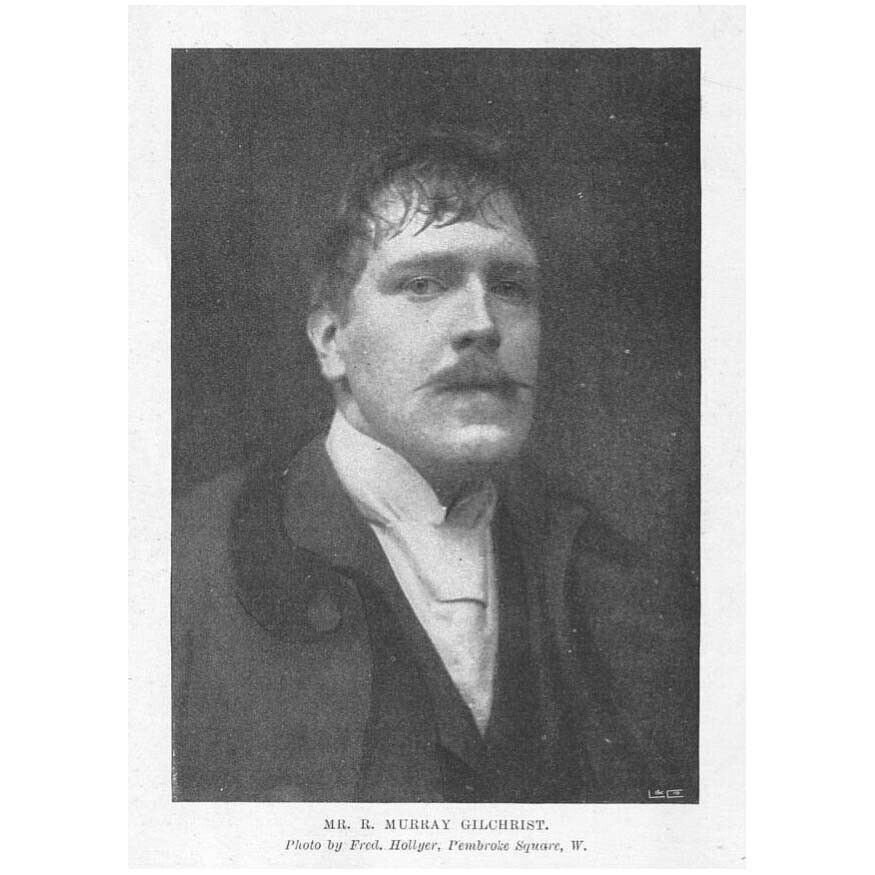
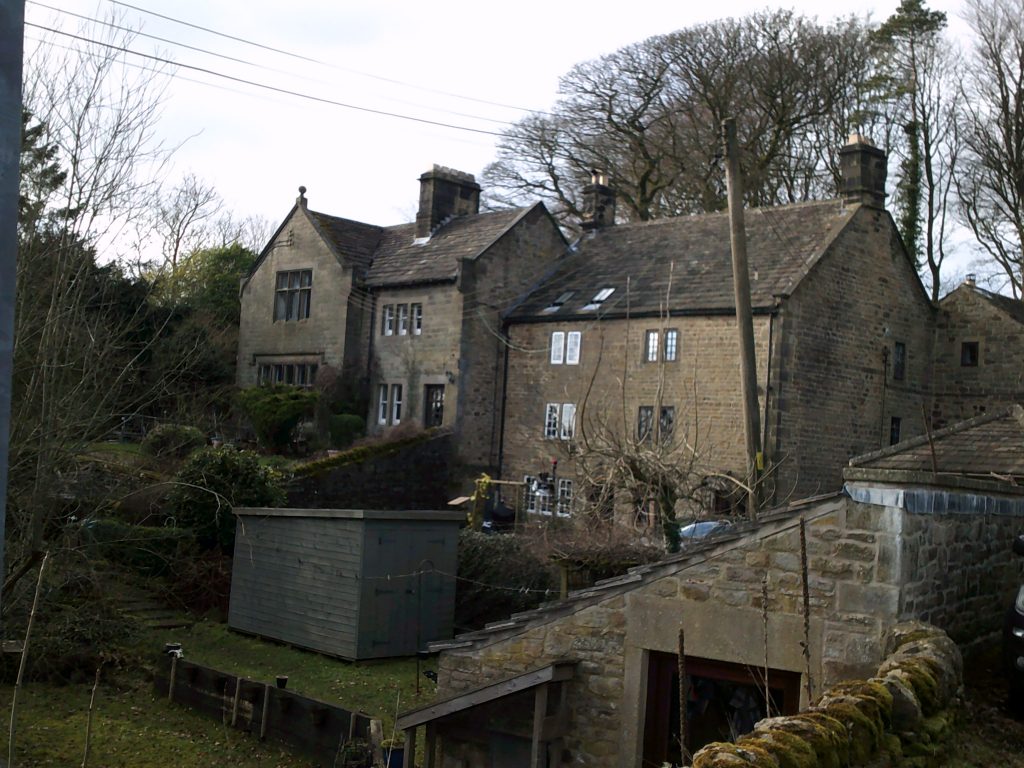
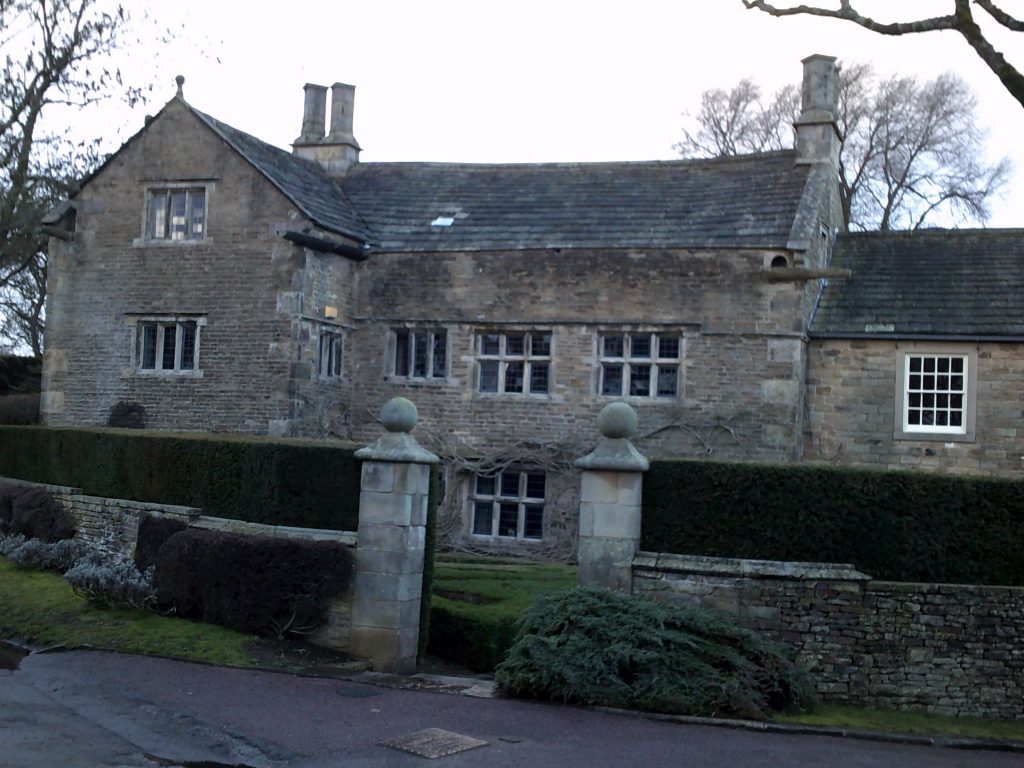
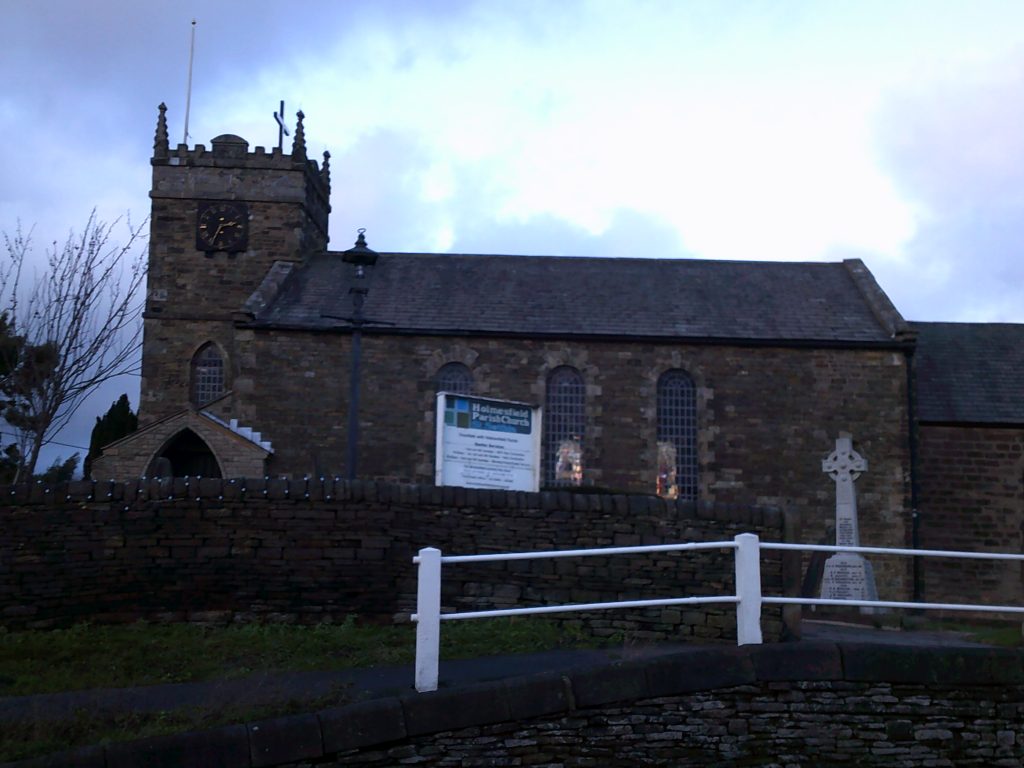
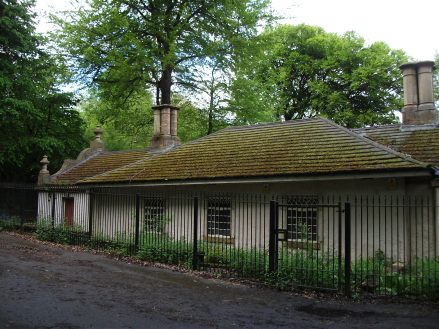
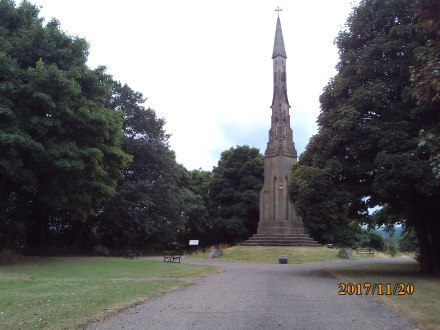
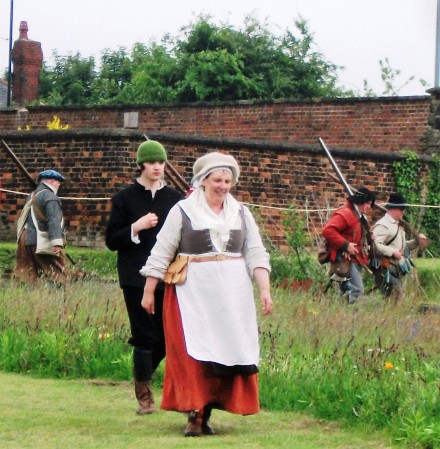
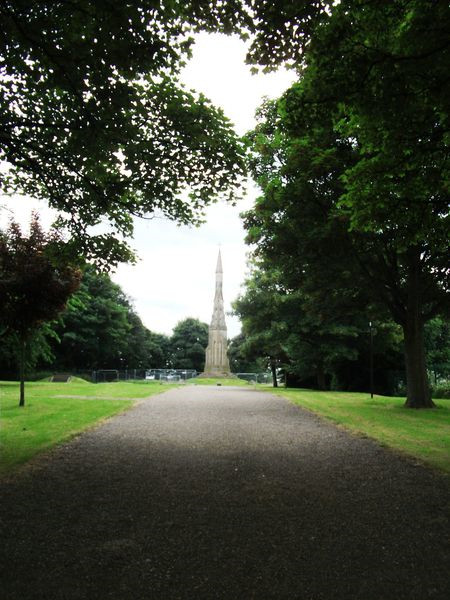
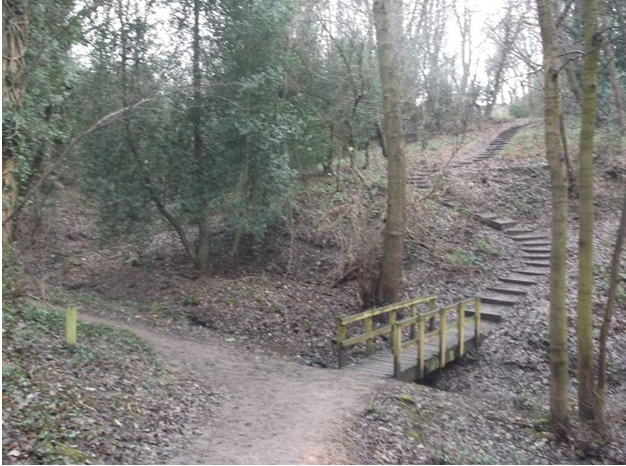
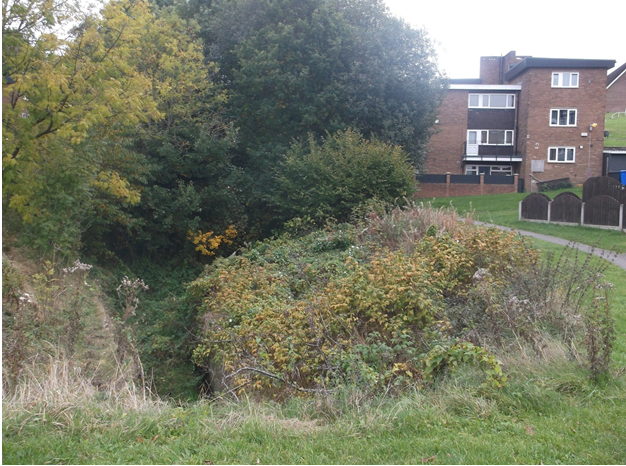
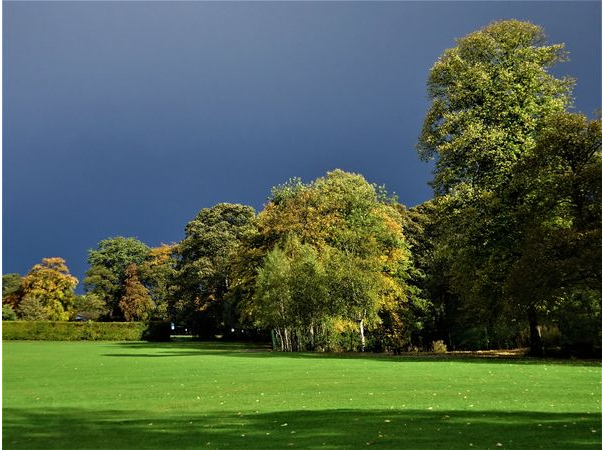
 The 18th century was a century for innovation, and invention throughout the world, but in Sheffield lift off in the local economy seemed to take off from two people really in the middle of the century.
The 18th century was a century for innovation, and invention throughout the world, but in Sheffield lift off in the local economy seemed to take off from two people really in the middle of the century. 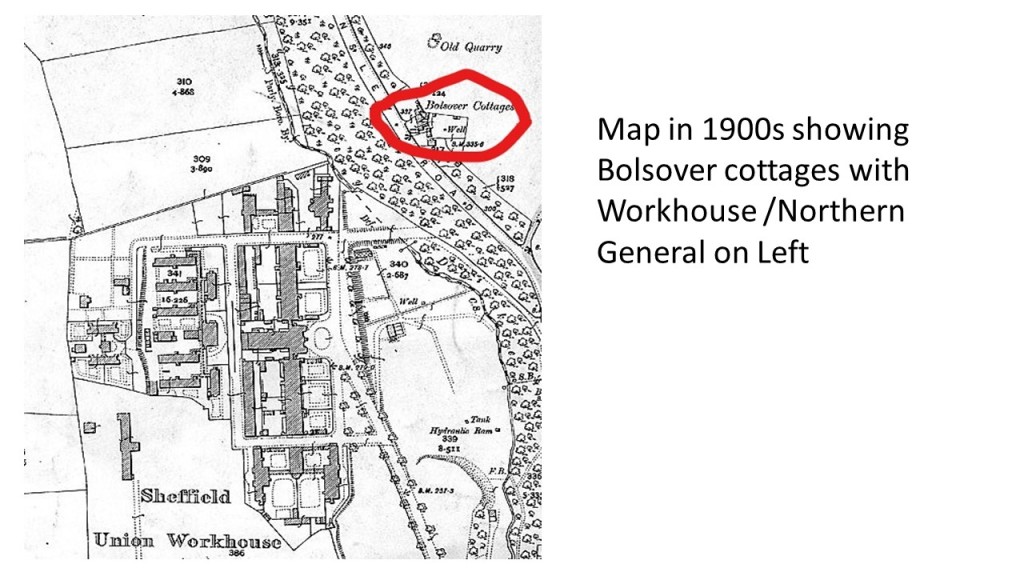
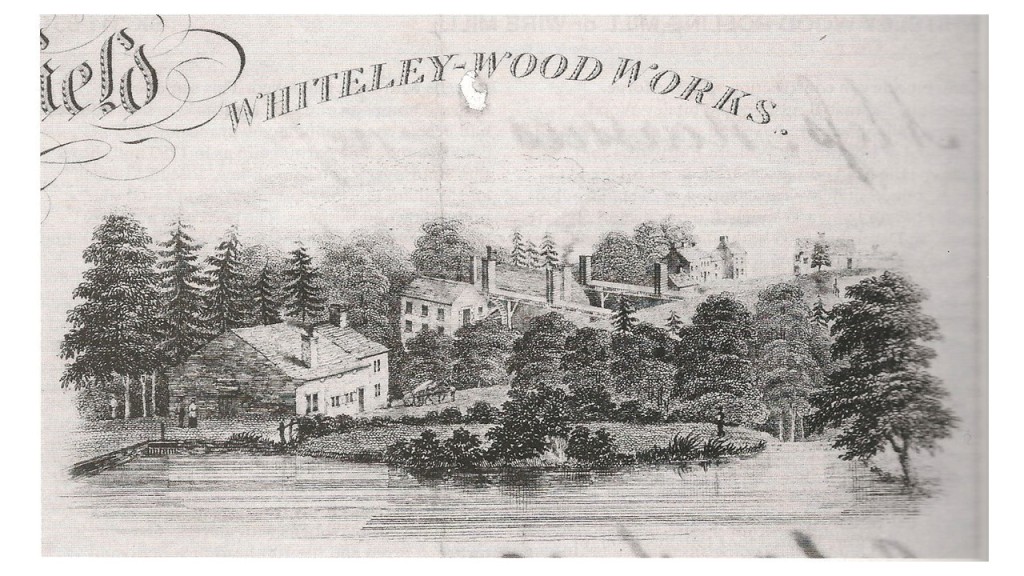
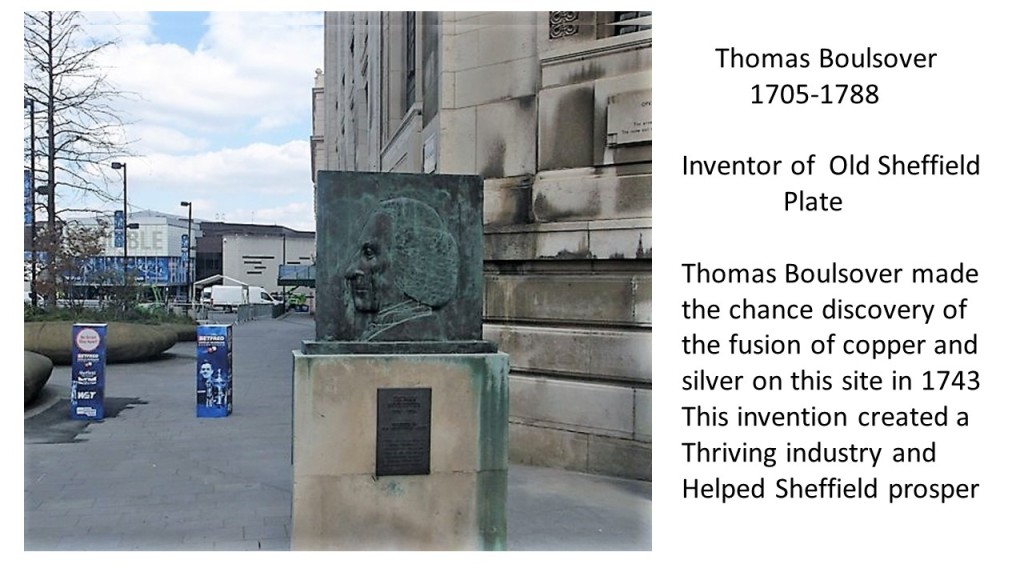
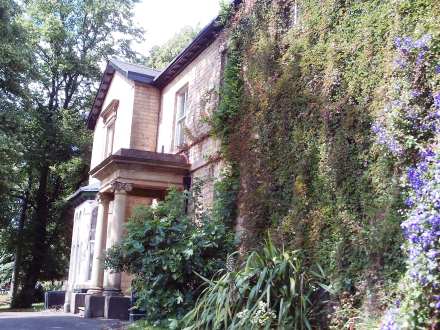
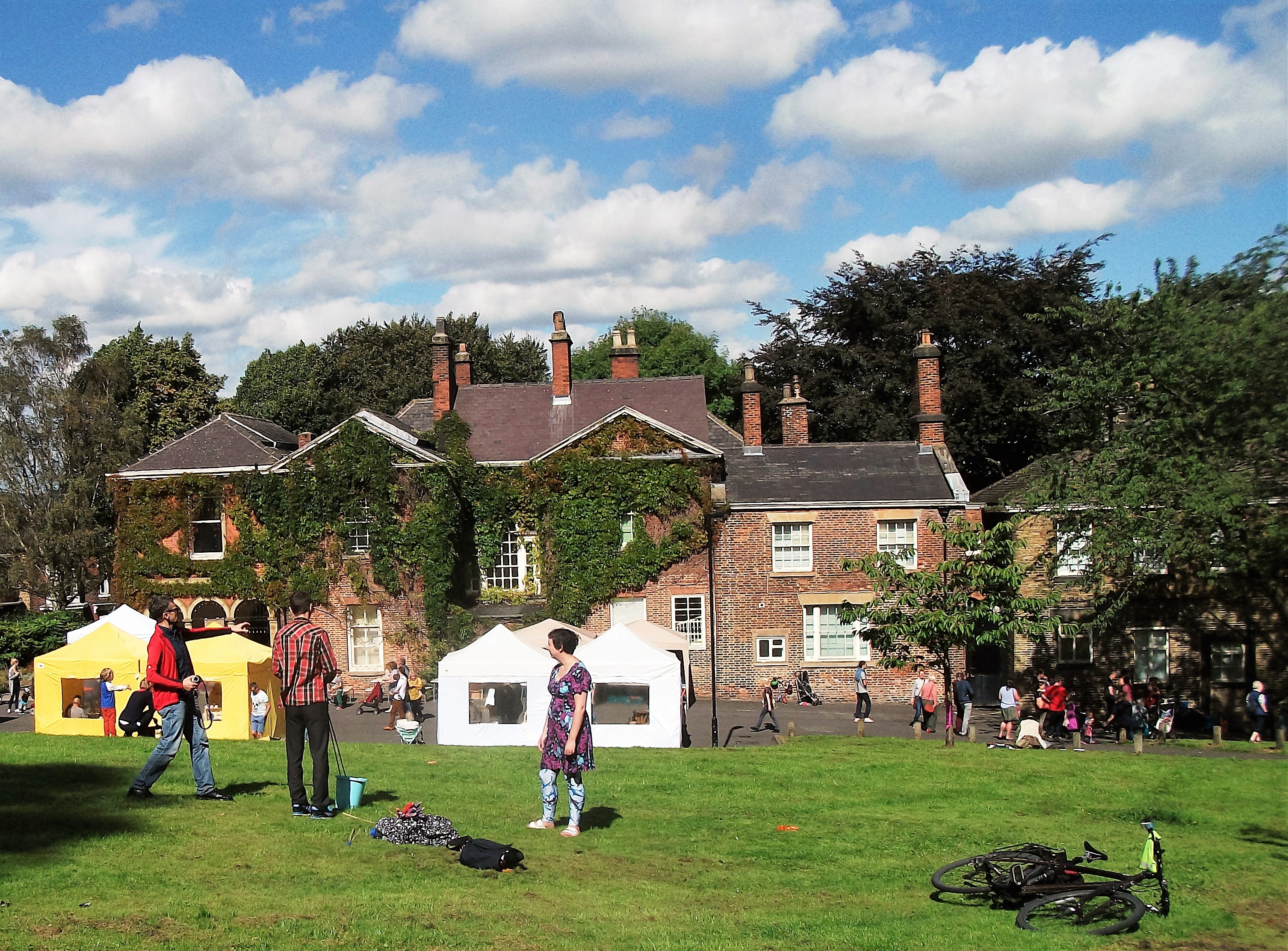 Happy New Year.
Happy New Year.